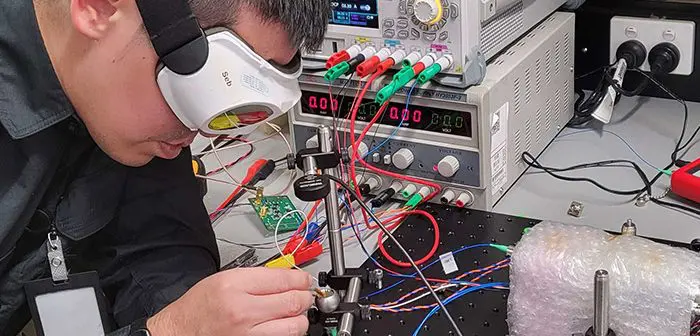
Australia’s QuantX Labs has closed a contract on its recently developed state-of-the-art optical atomic clocks. The company recently signed two deals with the Commonwealth of Australia, represented by the Department of Defence, totalling over AUD2.7 million.
QuantX Labs is developing precision timing and sensing technologies at Adelaide’s Innovation precinct, Lot Fourteen. Although still in limited release, these first atomic clocks mark a significant leap forward for the company and the broadening of its precision timing products.
The state-of-the-art portable optical atomic clocks are the culmination of over seven years of research and development, initially at the Institute of Photonics and Advanced Sensing (IPAS) at The University of Adelaide. This will be the second product that QuantX Labs has successfully translated out of IPAS, with this proven translation pathway also responsible for their flagship product, the Cryoclock, which delivers the world’s most pure output signals for use in radar. The Cryoclock is on a path for inclusion into Australia’s Jindalee Operational Radar Network over the next few years.
“I am very proud to have been part of this second outstanding example of technology transfer,” said QuantX Labs co-founder and Managing Director Professor Andre Luiten. “Here, we see leading-edge research translated into a globally-leading product through a deep and motivated collaboration between university researchers and industry. Sadly, while Australia is at the forefront of global research, it is a laggard when it comes to translating that capability into industry impact. Here, we have found the magic recipe to drive this critical need, which is creating jobs, economic wealth and an improved wellbeing of our society.”
Supporting Australian Defence Force requirements, QuantX will deliver a mobile precision timing test bed for Defence Systems to DSTG Edinburgh. The testbed, due for delivery in early 2025, can be used to test and evaluate sensors, communication, and navigation systems to determine operational resilience in a GPS-degraded scenario. QuantX will also deliver optical atomic clocks under AUKUS Pillar II by the end of 2024, enabling AUKUS partners to develop advanced precision navigation and timing capabilities. Initial testing of these first article optical clocks is showing almost an order of magnitude improvement on the performance of the current microwave atomic clocks used in today’s Global Navigation Satellite System (GNSS).
This same optical clock technology is being developed further at QuantX, with a clock satellite payload undergoing rigorous space-environment testing under the Australian Space Agency’s Moon to Mars program and is scheduled to be launched in 2025. The direct goal of that project is to make the first step towards an Australian capability in space timing. A side effect of the intense effort to ensure space compatibility is a future variant of the clock with even higher robustness and smaller size and power consumption.





